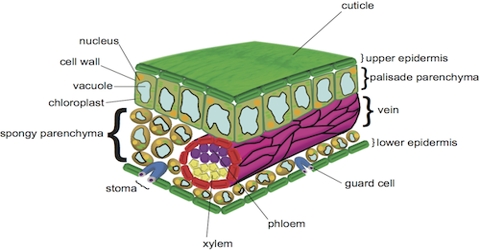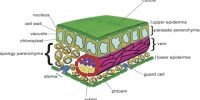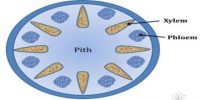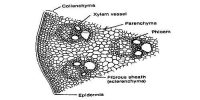Palisade parenchyma is the upper layer of ground tissue in a leaf, consisting of elongated cells beneath and perpendicular to the upper epidermis and constituting the main area of photosynthesis. The palisade parenchyma (also called the palisade mesophyll) aids in photosynthesis and has column-shaped, tightly-packed cells. It may be there in one, two, or three layers. Below the upper epidermis 2-3 rows of long parenchymatous cells are present which are enriched with; plenty of chlorophyll.
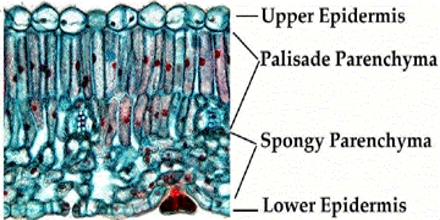
Characteristics:
- These are there below the upper epidermis in dorsiventral leaf.
- These are perpendicularly elongated parenchymatous cells and are strongly fitted to each other without intercellular spaces.
- These are present in three layers.
- These cells surround more chloroplasts. Chloroplasts are radically arranged in these cells. Thus, the upper part of the leaf is dark green.
Function: Main function is to prepare food.
The primary function of the palisade parenchyma of a leaf is to host most of the chloroplasts in the plant, which is where photosynthesis occurs.
